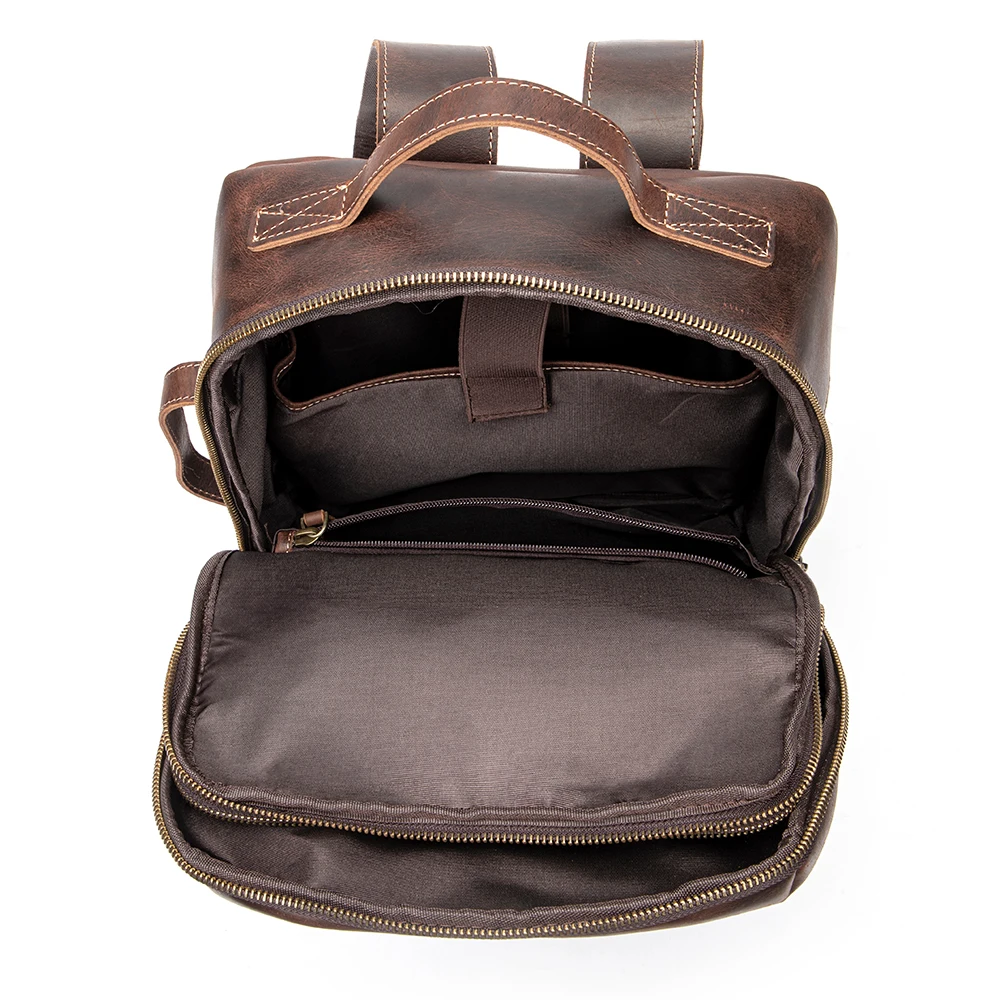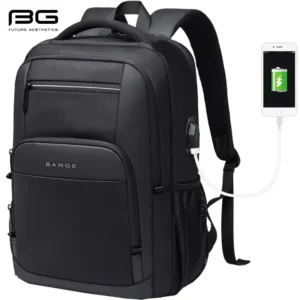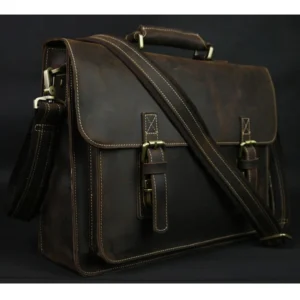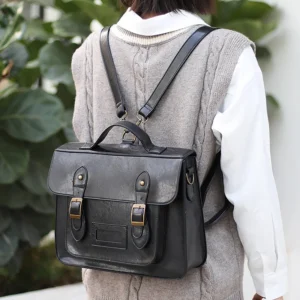Introduction
The perfect travel companion isn’t just about functionality—it’s about finding that sweet spot where practicality meets style. Carry-on backpacks with a leather finish offer exactly this balance, providing travelers with a sophisticated way to transport their essentials without sacrificing convenience or aesthetics.
At the intersection of travel efficiency and timeless style, these versatile bags have become increasingly popular among discerning travelers who refuse to compromise. A well-crafted leather backpack isn’t merely a luggage choice; it’s a statement piece that:
- Complies with airline carry-on restrictions while maximizing available space
- Offers hands-free convenience through airports and crowded spaces
- Projects professionalism and sophistication in any setting
- Develops character and beauty over time, unlike synthetic alternatives
- Provides organization solutions specifically designed for modern travelers
Leather carry-on backpacks stand apart from conventional travel bags by elevating the travel experience. They solve common pain points like awkward handling of rolling luggage on uneven surfaces and the unprofessional appearance of technical hiking backpacks in business settings.
In this comprehensive guide, we’ll explore everything you need to know about these premium travel companions—from understanding different leather types and their characteristics to finding the perfect size, organization system, and maintenance routine for your travel needs. Whether you’re a frequent business traveler or weekend adventurer, this guide will help you make an informed decision that matches your specific travel style.
The Allure of Leather Finish in Travel Backpacks
There’s something undeniably captivating about leather that has drawn travelers to this material for centuries. In an age of mass-produced synthetic goods, leather travel backpacks stand out as items of substance and character. This enduring appeal stems from several distinct qualities that synthetic alternatives simply cannot replicate.
The versatility of a leather backpack is perhaps its greatest strength. Unlike bags that look out of place when transitioning between environments, a well-designed leather backpack moves effortlessly from airport terminals to business meetings to dinner reservations. This chameleon-like quality makes it an ideal investment for travelers who find themselves in varied settings throughout their journeys.
Beyond aesthetics, leather offers practical advantages that resonate with seasoned travelers:
- Durability that improves with age: While synthetic materials deteriorate and look worn over time, quality leather develops a rich patina that tells the story of your adventures.
- Natural weather resistance: Good leather naturally repels light moisture and develops additional resistance with proper conditioning.
- Structural integrity: Leather maintains its shape without sagging or deforming when properly constructed.
- Sensory experience: The distinctive smell and supple feel of genuine leather create a premium experience that synthetic materials cannot match.
Perhaps most compelling is how leather backpacks serve as travel companions in the truest sense—evolving alongside you through countless journeys. Each scratch becomes a memory, each weathered edge a testament to places visited. This personal connection transforms what could be just another travel accessory into something meaningful—a leather backpack doesn’t merely contain your belongings; it contains your experiences.
The investment in a quality leather backpack pays dividends not just in longevity but in the daily pleasure of using something that improves rather than deteriorates with use. It’s a relationship that stands in stark contrast to the disposable nature of much modern luggage.
Understanding Leather Types: A Traveler’s Guide to Materials
When shopping for a leather backpack, understanding the vast differences between leather types becomes crucial—not all “leather” offers the same quality, durability, or aesthetic appeal. This knowledge helps you make an informed decision aligned with both your budget and travel needs.
Full-Grain Leather
The gold standard of leather, full-grain leather backpacks represent the highest quality available. This leather comes from the top layer of the hide and retains all of the natural grain, making each piece uniquely textured. Nothing is removed or altered from the surface, preserving its natural strength and breathability.
For travelers, the advantages are substantial:
– Exceptional durability that can withstand decades of use
– Develops a beautiful patina that enhances its appearance over time
– Natural water resistance that improves with proper conditioning
– Breathable material that adapts to different climates
The main consideration is the higher initial investment, but many travelers find this justified by the remarkable longevity and character development.
Top-Grain Leather
The second-highest grade of leather, top-grain starts with the same quality as full-grain but undergoes sanding to remove imperfections and irregularities. This creates a more uniform appearance and slightly thinner material that’s more pliable.
For travelers seeking a balance between quality and price, top-grain offers:
– Greater uniformity in appearance than full-grain
– Still develops a patina, though less pronounced
– Good durability with proper care
– More affordable than full-grain options
Understanding the differences between full-grain and top-grain leather can help you decide which best suits your travel style and budget.
Genuine Leather
Despite its name suggesting authenticity, “genuine leather” actually indicates a lower grade product made from the layers remaining after top-grain is removed. Split and bonded together, this material is less durable and lacks the natural characteristics of higher grades.
For budget-conscious travelers, genuine leather provides:
– A more affordable entry point into leather goods
– The basic look and feel of leather
– Decent performance with regular maintenance
– Less longevity than higher grades
Bonded Leather
At the lowest end of real leather products, bonded leather consists of leather scraps and fibers mixed with adhesives and formed into sheets. While technically containing leather, its performance differs dramatically from higher grades.
Budget travelers should know that bonded leather offers:
– The most affordable “leather” option
– Significantly reduced durability
– Limited or no patina development
– Tendency to peel or crack with regular use
PU/Vegan Leather
Synthetic alternatives have improved dramatically in recent years. Polyurethane (PU) leather and other vegan options offer alternatives for those avoiding animal products or seeking specific aesthetic qualities.
Modern vegan leather options provide:
– Consistent appearance without natural variations
– Lower price points than genuine leather
– Lighter weight for travel
– Easier maintenance requirements
– Animal-free alternative
| Leather Type | Durability | Patina Development | Weight | Maintenance | Price Range | Best For |
|---|---|---|---|---|---|---|
| Full-Grain | Excellent | Significant | Heavy | Moderate | $$$-$$$$ | Long-term investment, character |
| Top-Grain | Very Good | Moderate | Medium-Heavy | Moderate | $$-$$$ | Balance of quality and price |
| Genuine | Fair | Minimal | Medium | High | $-$$ | Budget leather appearance |
| Bonded | Poor | None | Light | High | $ | Lowest cost “leather” look |
| Vegan/PU | Variable | None | Light | Low | $-$$ | Animal-free, consistent look |
By understanding these differences, you can make a choice that aligns with both your ethical preferences and practical travel needs.
Essential Carry-On Dimensions: Navigating Airline Requirements
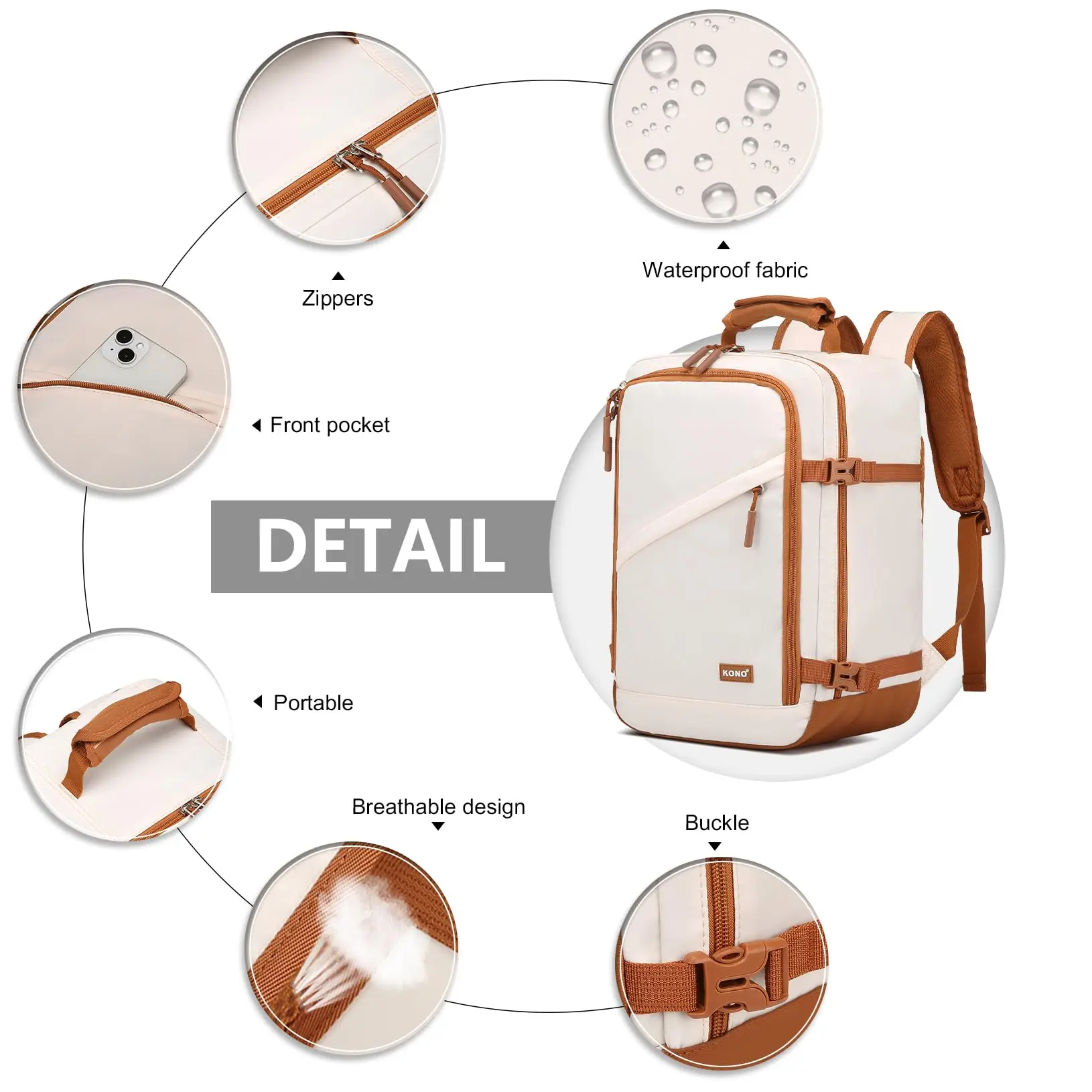
Navigating airline carry-on restrictions can be one of the most stressful aspects of travel. The perfect leather backpack becomes considerably less perfect if you’re forced to check it at the gate due to size limitations. Understanding these restrictions is essential when investing in a quality leather travel backpack.
Most major airlines have standardized their carry-on dimensions to approximately 22 x 14 x 9 inches (56 x 36 x 23 cm), though variations exist between carriers and between domestic and international flights. Personal items (which can include smaller backpacks) typically must fit under the seat in front of you, with common restrictions around 18 x 14 x 8 inches (46 x 36 x 20 cm).
When selecting a leather backpack for travel, pay careful attention to the manufacturer’s dimensions. Remember that soft-sided backpacks offer some flexibility compared to rigid luggage, but overstuffing a backpack beyond its stated dimensions can risk airline rejection.
Understanding the relationship between dimensions and capacity is crucial when choosing the right backpack size. A well-designed backpack maximizes interior space while maintaining compliant exterior dimensions.
| Airline | Carry-On Max Dimensions | Personal Item Max Dimensions | Weight Limit |
|---|---|---|---|
| American | 22 x 14 x 9 in | 18 x 14 x 8 in | No published limit |
| Delta | 22 x 14 x 9 in | 18 x 14 x 8 in | No published limit |
| United | 22 x 14 x 9 in | 17 x 10 x 9 in | No published limit |
| Southwest | 24 x 16 x 10 in | 18.5 x 13.5 x 8.5 in | No published limit |
| JetBlue | 22 x 14 x 9 in | 17 x 13 x 8 in | No published limit |
| British Airways | 22 x 18 x 10 in | 16 x 12 x 6 in | 51 lbs |
| Lufthansa | 22 x 16 x 9 in | 16 x 12 x 6 in | 17.6 lbs |
An important consideration specific to leather backpacks is weight. Quality leather is naturally heavier than synthetic materials, and this can impact:
- Your comfort when carrying the bag through extensive airport walks
- Compliance with weight restrictions on airlines with strict carry-on weight limits
- The effective capacity, as the bag itself consumes part of your weight allowance
Despite these considerations, the benefits of leather’s durability and professional appearance often outweigh the additional weight for many travelers. The key is choosing a backpack whose dimensions allow it to serve as either your primary carry-on or as your personal item, depending on your other luggage needs.
Capacity and Organization: Maximizing Space in Leather Backpacks
When it comes to travel efficiency, the interior design of your backpack matters just as much as its external dimensions. Understanding capacity measurements and organizational features helps ensure your leather backpack serves your specific travel needs.
Backpack capacity is typically measured in liters, with most carry-on compatible backpacks ranging from 20 to 45 liters. This measurement can sometimes be difficult to visualize, so here’s a practical framework:
- 20-25 liters: Ideal for minimalist travelers or single overnight trips
- 25-35 liters: Sweet spot for weekend trips or 2-3 day business travel
- 35-45 liters: Maximum carry-on capacity for longer trips (5-7 days)
Beyond raw capacity, how that space is organized dramatically impacts usability. Premium leather backpacks distinguish themselves through thoughtful compartmentalization. Leather laptop backpacks often excel in this area, with dedicated spaces for technology and business essentials.
Key organizational features to evaluate include:
Main Compartment Design:
– Clamshell opening: Opens like a suitcase for easy packing and access to all contents
– Top-loading: More traditional backpack design with access from the top
– Hybrid designs: Offering multiple access points to different sections
Technology Protection:
– Padded laptop sleeves (note the maximum laptop size accommodated)
– Tablet pockets with soft lining to prevent scratches
– Cable management systems to prevent tangling
Business Organization:
– Document sleeves for papers and folders
– Pen holders and small item pockets
– Key clips and secure ID compartments
Travel-Specific Features:
– Compression straps to secure contents and minimize bulk
– Expandable capacity through zippered gussets
– Removable packing cubes or pouches
The best organized compartments in leather backpacks balance accessibility with security. Look for designs where your most valuable items (passport, wallet, electronics) can be kept secure against your back, while items you need frequent access to (boarding pass, phone, snacks) remain easily reachable without removing the backpack.
For business travelers, consider how the backpack transitions from travel to professional settings. Can the laptop compartment be accessed quickly during security screening? Is there a dedicated space for business cards or presentation materials? These details make a significant difference in day-to-day usability.
Remember that excessive compartmentalization can sometimes reduce overall capacity, so consider your typical packing style. Minimalists might prefer fewer, larger compartments, while the organizationally-minded may appreciate numerous specific-purpose pockets.
Comfort Features for the Traveling Professional
Even the most beautiful leather backpack will disappoint if it causes discomfort during long travel days. The challenge for manufacturers is balancing professional aesthetics with ergonomic design—a challenge that premium brands have increasingly met through innovative features.
When evaluating comfort in a leather travel backpack, consider these key elements:
Strap Design and Padding
– Contoured, padded shoulder straps that distribute weight evenly
– Adjustable strap positioning to accommodate different body types
– Strap width proportional to the bag’s intended capacity (wider straps for larger bags)
Back Panel Construction
– Padding that creates airflow channels to reduce perspiration
– Ergonomic curvature that follows the natural shape of your back
– Materials that prevent leather from directly contacting your clothing (avoiding moisture transfer)
Load Distribution Systems
– Sternum straps to prevent shoulder straps from sliding outward
– Load lifters that adjust how weight sits against your upper or lower back
– Proper weight distribution between shoulder straps and back panel
Carrying Versatility
– Top and side handles positioned for balanced lifting when not worn as a backpack
– Luggage pass-through sleeves that allow the backpack to slide over rolling luggage handles
– Quick-release mechanisms for easily removing or putting on the backpack
Professional leather backpacks must solve unique comfort challenges. Unlike technical hiking packs that can prioritize function over form, these bags must maintain their sophisticated appearance while still providing comfort during long airport walks or city explorations.
Understanding proper backpack weight distribution techniques can significantly enhance comfort regardless of the specific bag design. Proper packing—placing heavier items close to your back and at the height of your shoulder blades—can transform the carrying experience even in backpacks with minimal ergonomic features.
For frequent travelers, investing in a backpack with premium comfort features pays dividends through reduced fatigue and potential long-term posture benefits. This is particularly true for those who regularly carry technology, as laptops and related gear can quickly add significant weight to your load.
The best leather backpacks for travelers incorporate these comfort features subtly, maintaining clean lines and professional aesthetics while ensuring the bag remains comfortable even after hours of wear.
Durability Factors: What Makes a Leather Backpack Last
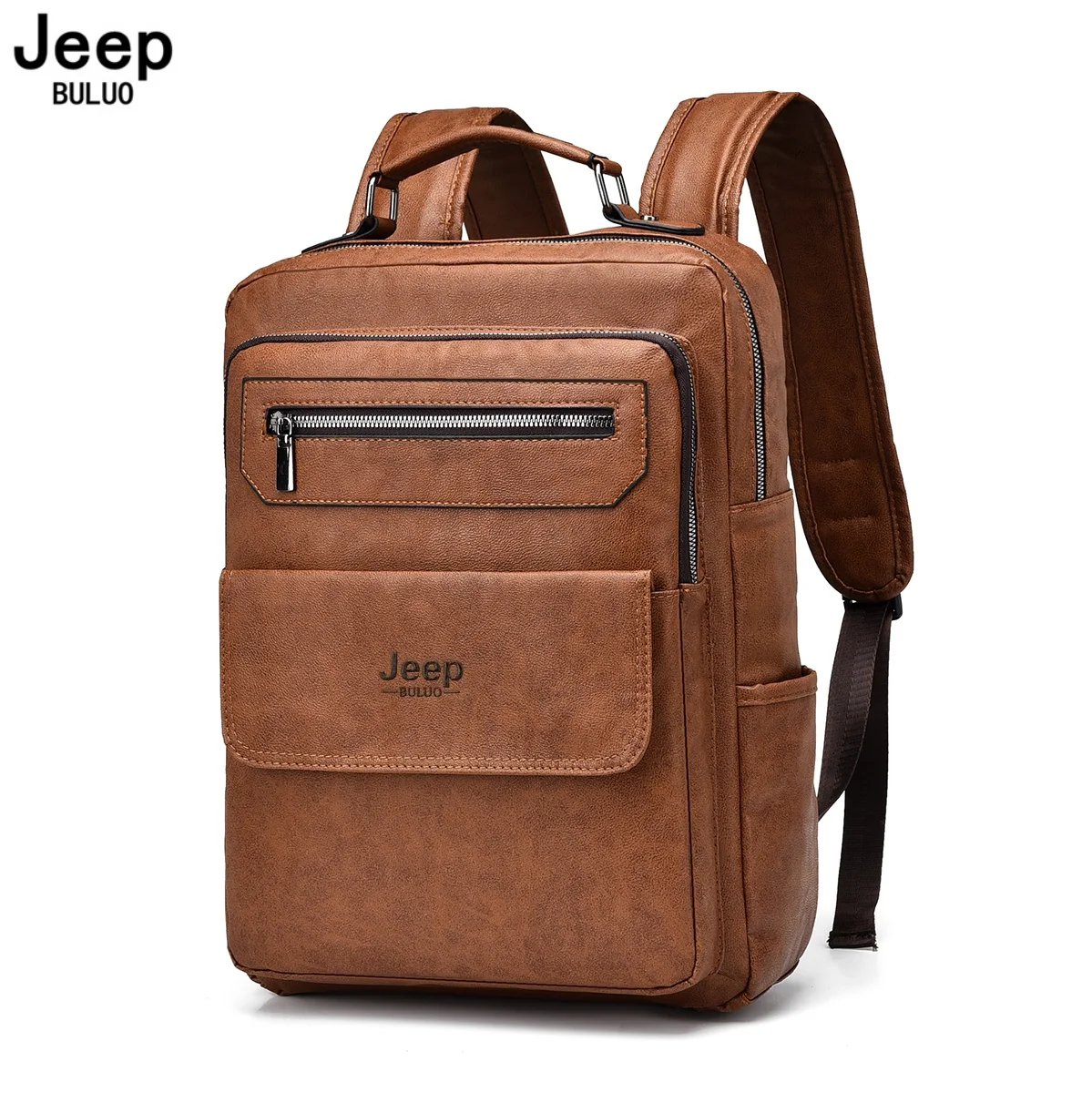
Quality leather backpacks are built to last decades rather than seasons, making their durability features critical considerations when evaluating investment value. Understanding the construction elements that determine longevity helps you distinguish truly premium options from those that merely look expensive.
Critical Construction Elements
Zipper Quality
The humble zipper is often the first component to fail on lesser bags. Premium leather backpacks typically feature:
– YKK or other high-quality branded zippers
– Metal rather than plastic teeth for high-stress areas
– Self-healing designs that realign if caught or forced
– Weather-resistant or waterproof treatments
Hardware Components
Metal hardware pieces significantly impact both aesthetics and durability:
– Solid brass or stainless steel buckles and D-rings resist corrosion
– Riveted rather than stitched attachment points for handles and straps
– Reinforced stress points where hardware connects to leather
– Minimal plastic components that could crack or degrade
Stitching Techniques
Examine the stitching carefully for indicators of quality:
– Dense, even stitching with no loose threads
– Reinforced stitching at high-stress junctions
– Rolled or bound edges to prevent fraying
– Back-stitching at termination points for security
Durable leather backpacks for commuters incorporate these elements to withstand daily use. The difference becomes apparent after months of regular use, when inferior bags begin to show structural weaknesses while quality options maintain their integrity.
Water Resistance Considerations
While traditional leather isn’t naturally waterproof, many modern leather backpacks incorporate essential waterproofing features to protect your belongings:
- Treated leather that repels light rain and moisture
- Water-resistant linings that provide secondary protection
- Covered zippers or zipper garages that prevent water penetration
- Properly waxed thread that doesn’t wick moisture into seams
These features allow leather backpacks to serve as reliable travel companions even in unpredictable weather conditions, though extreme exposure should still be avoided.
Interior Construction
A backpack’s interior construction is as important as its exterior for long-term durability:
– Reinforced lining materials that resist tearing and abrasion
– Properly finished seams that won’t fray with use
– Structured compartments that maintain their shape over time
– Thoughtfully placed reinforcement in high-wear areas
These durability factors collectively explain why premium leather backpacks command higher prices—they’re engineered to serve as long-term investments rather than disposable items. The initial cost, when amortized over years or even decades of use, often represents greater value than repeatedly replacing lower-quality alternatives.
Aesthetic Considerations: Finding Your Perfect Style
Beyond functionality, the aesthetic appeal of a leather backpack plays a major role in its suitability as a travel companion. The right style not only complements your personal taste but also adapts appropriately to your typical travel environments.
Distinctive Design Approaches
Minimalist Modern
Clean lines, subtle branding, and architectural influences characterize minimalist designs. These backpacks typically feature:
– Smooth, uniform leather with minimal texture
– Concealed or simplified hardware
– Monochromatic or two-tone color schemes
– Geometric silhouettes without excessive detailing
Heritage-Inspired
Vintage leather backpacks draw inspiration from historical designs, offering timeless appeal through:
– Distressed or weathered leather finishes
– Prominent hardware with an aged appearance
– Traditional construction techniques like saddle stitching
– Design details that reference historical luggage
Many travelers appreciate how vintage-inspired leather backpack designs develop character and tell a story through their aging process.
Executive Professional
Business-oriented backpacks prioritize sophistication and boardroom-appropriateness through:
– Structured silhouettes that maintain shape even when not full
– Reserved color palettes (black, dark brown, navy)
– Subtle branding and minimal external hardware
– Architectural influences that convey precision
Urban Adventure
This style balances rugged utility with city-appropriate aesthetics:
– Textured or pebbled leather that masks minor scratches
– Functional external pockets and attachment points
– Comfortable carrying systems designed for all-day wear
– Design elements from outdoor gear adapted for urban environments
Color and Finish Considerations
Leather color choice impacts both style and practicality:
- Dark browns offer classic versatility while hiding minor marks
- Black provides formal elegance but can show dust more prominently
- Tan and cognac develop the most dramatic patina but show wear more quickly
- Navy and burgundy offer distinctive alternatives that remain professional
- Olive and other unique colors make a statement but may limit versatility
The leather finish also dramatically affects appearance:
– Smooth leather showcases the material’s natural beauty but highlights scratches
– Pebbled textures mask minor wear and often require less maintenance
– Pull-up leather develops character as oils shift with use, creating lighter areas at flex points
– Matte finishes provide a contemporary look that avoids excessive shine
– Glossy finishes create a more formal appearance but can show fingerprints
The ideal aesthetic choice depends on your personal style, typical travel destinations, and the professional environments you navigate. The most versatile options balance distinctive character with adaptability across multiple settings.
Security Features for the Modern Traveler
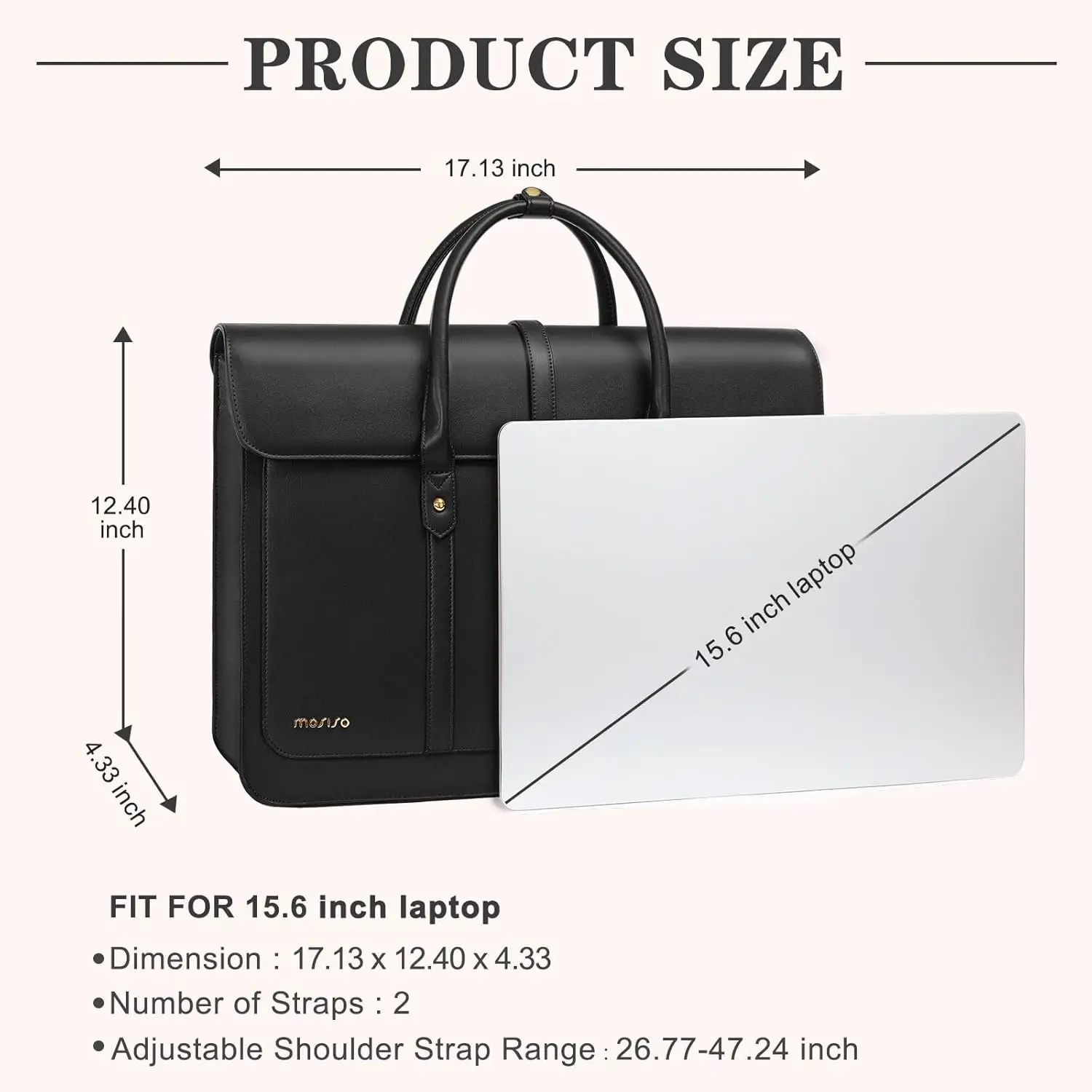
Travel inherently involves security vulnerabilities—crowded spaces, unfamiliar environments, and moments of distraction. Premium leather backpacks increasingly incorporate thoughtful security features that protect your belongings without sacrificing the bag’s aesthetic appeal or convenience.
Essential Security Elements
Access Protection Systems
– Lockable zipper pulls that accept travel-friendly TSA locks
– Hidden zipper plackets that conceal access points from casual view
– Magnetic closures with secondary securing mechanisms
– Top flaps or roll-tops that naturally cover main compartment openings
Anti-Theft Compartments
Every traveler benefits from having secure places for valuables:
– RFID-blocking pockets for passports and credit cards
– Hidden compartments positioned against your back
– Internal zippered security pockets for cash and documents
– Secret pockets with deceptive or difficult-to-detect openings
Slash Resistance
Higher-end travel backpacks may incorporate:
– Reinforced bottom panels that prevent “cutting-and-grab” theft
– Steel mesh or reinforcement in critical areas
– Cut-resistant straps that maintain structural integrity
– Chain-reinforced anchor points for securing to fixed objects
Integrated Technology
Some premium leather backpacks now feature:
– Discreet GPS tracking compartments
– Built-in alarm systems triggered by unauthorized opening
– RFID protection zones for digital security
– USB charging ports connected to protected power bank compartments
The key to effective security features in leather backpacks is their seamless integration. Unlike dedicated anti-theft bags that often broadcast their security focus through technical materials and visible features, premium leather options incorporate protection discreetly. This subtlety is crucial—an obviously “secure” bag can sometimes attract unwanted attention by suggesting valuable contents.
For business travelers, the balance between security and accessibility is particularly important. Quick access to frequently-used items must be maintained while still protecting valuable equipment and sensitive documents. The best designs create security zones within the backpack, with progressively more secure storage as you move deeper into the bag or closer to your body.
When evaluating security features, consider your typical travel patterns. Urban explorers and those visiting areas with higher theft rates might prioritize anti-theft features, while business travelers might focus more on document protection and digital security.
Our Top Picks: Premium Leather Carry-On Backpacks
After examining the key factors that make leather backpacks ideal travel companions, let’s explore some outstanding options across different categories. Each of these selections balances aesthetics, functionality, durability, and value in ways that address different traveler needs.
The Executive Commuter
Material: Full-grain vegetable-tanned leather
Dimensions: 18” x 12” x 6” (46cm x 30cm x 15cm)
Capacity: 24 liters
Ideal For: Business travelers who need professional appearance with practical features
This sophisticated backpack features a dedicated padded compartment for laptops up to 15.6 inches, with a separate tablet sleeve. The clamshell opening allows easy access to the main compartment, while the front organizational panel keeps essentials within reach. Premium YKK zippers, a luggage pass-through sleeve, and ergonomically padded shoulder straps complete this professional package.
The restrained aesthetic makes this perfect for business settings, while the quality construction ensures years of dependable service. The vegetable-tanned leather develops a beautiful patina that tells the story of your journeys.
The Weekender
Material: Top-grain leather with water-resistant finish
Dimensions: 20” x 14” x 9” (51cm x 36cm x 23cm)
Capacity: 35 liters
Ideal For: Weekend travelers needing maximum carry-on capacity with style
Pushing the boundaries of carry-on limits, this spacious backpack accommodates enough for a 3-4 day trip. The large U-zip main compartment opens fully for easy packing, while compression straps keep contents secure. A separate shoe compartment at the bottom protects your clothing from dirt.
What sets this model apart is its versatility—removable padded straps allow it to function as either a backpack or duffel bag. The water-resistant leather finish and reinforced bottom panel protect your belongings in various conditions.
The Digital Nomad
Material: Full-grain leather front with ballistic nylon back panel
Dimensions: 19” x 13” x 7” (48cm x 33cm x 18cm)
Capacity: 28 liters
Ideal For: Tech-focused travelers needing extensive organization and comfort
This hybrid design combines leather’s aesthetic appeal with technical fabrics where they improve functionality. The result is a backpack that looks sophisticated while offering superior comfort during long wear.
The standout feature is its comprehensive tech organization—a dedicated compartment fits laptops up to 17 inches, with additional padded sleeves for tablets and e-readers. Cable management pockets, power bank storage with external USB ports, and RFID-protected pockets make this ideal for the digitally-connected traveler.
The Heritage Traveler
Material: Oil-tanned full-grain leather
Dimensions: 17” x 11.5” x 5.5” (43cm x 29cm x 14cm)
Capacity: 22 liters
Ideal For: Style-conscious travelers who appreciate traditional craftsmanship
With a design inspired by classic mountaineering packs, this backpack offers timeless appeal for those who value heritage aesthetics. The oil-tanned leather develops a rich patina quickly, creating a bag that becomes increasingly personal with use.
Despite its traditional appearance, modern features abound—a padded laptop sleeve, internal organization pockets, and a secure back-zip pocket for valuables. The brass hardware and thick leather construction ensure this pack will last for decades rather than years.
The Lightweight Professional
Material: Premium vegan leather
Dimensions: 16.5” x 11” x 5” (42cm x 28cm x 13cm)
Capacity: 18 liters
Ideal For: Weight-conscious travelers seeking a professional look without leather’s heaviness
For those concerned about either animal products or the inherent weight of genuine leather, this vegan alternative offers a sophisticated appearance without the drawbacks. At just over 2 pounds empty (compared to 3-4 pounds for full-grain leather equivalents), it’s significantly lighter while maintaining a premium look.
The slim profile makes it perfect as a personal item that slides under airplane seats while still accommodating laptops up to 15 inches. Water-resistant materials and streamlined organization make this an excellent choice for minimalist business travelers.
14 Inch Leather Laptop Backpack, Brown Leather Backpack, Men's Leather Backpack, Vintage Leather Backpack
Price range: $177.28 through $199.12 Select options This product has multiple variants. The options may be chosen on the product pageCarry On Leather Backpack, Roll Top Leather Backpack
Price range: $77.76 through $96.48 Select options This product has multiple variants. The options may be chosen on the product pageDesigner Men's Backpack, Men's Leather Laptop Backpack, Men's Leather Work Backpack
Price range: $158.04 through $160.04 Select options This product has multiple variants. The options may be chosen on the product page15 Inch Leather Laptop Backpack, Leather Briefcase Backpack
$332.96 Select options This product has multiple variants. The options may be chosen on the product page17 Inch Leather Laptop Backpack, Men's Leather Travel Backpack, Men's Leather Work Backpack
Price range: $106.28 through $143.88 Select options This product has multiple variants. The options may be chosen on the product pageWomen's Leather Backpack, Women's Leather Work Backpack
Price range: $119.36 through $128.52 Select options This product has multiple variants. The options may be chosen on the product page
Men’s and women’s leather travel backpacks sometimes differ in design proportions while maintaining similar functionality. The best men’s leather travel backpacks typically feature slightly wider shoulder straps and back panels, while women’s designs may offer adjusted strap positioning for optimal comfort.
Comparison Guide: Finding Your Perfect Match
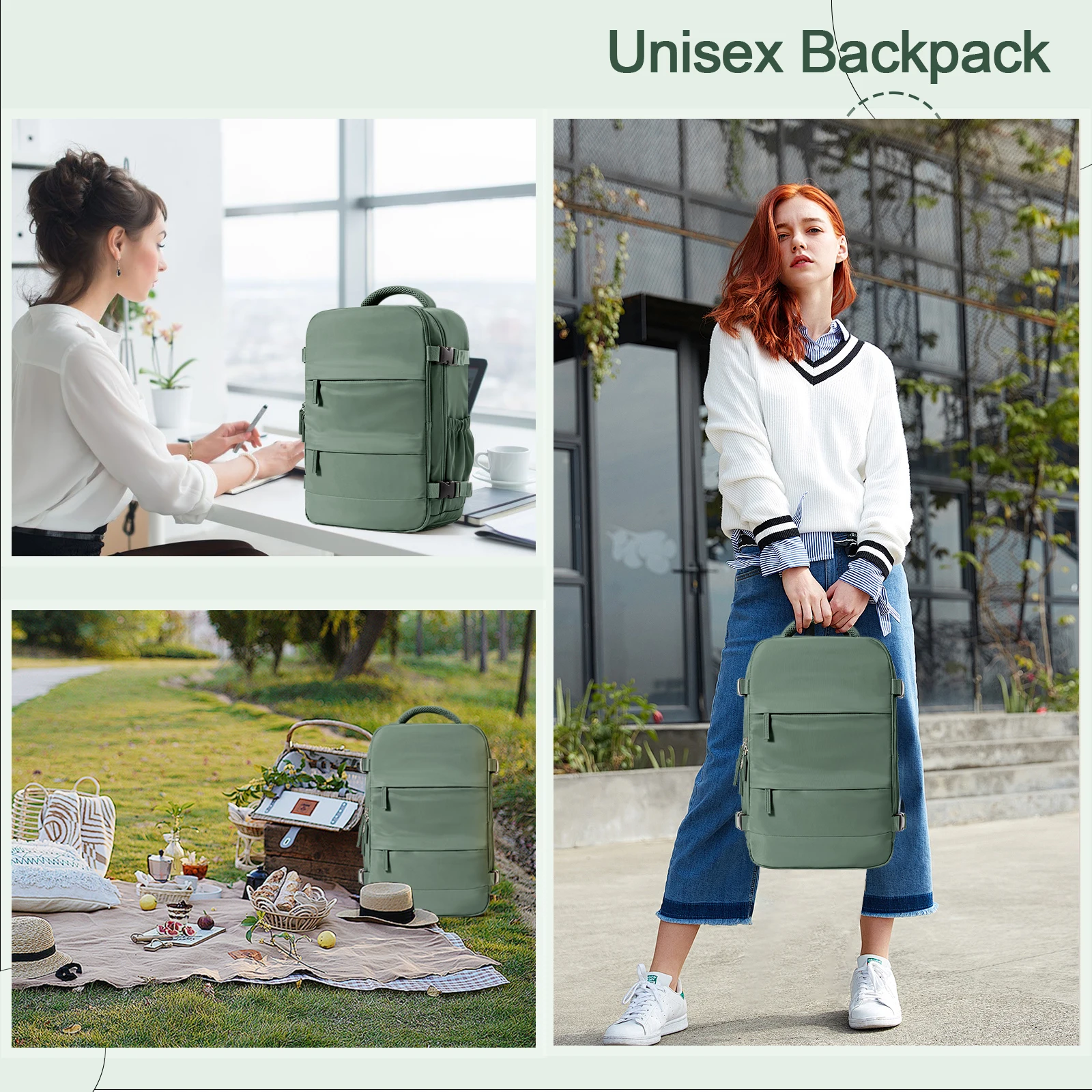
To help you navigate the options presented above, this comparison highlights the key differentiating factors between our recommended backpacks:
| Feature | Executive Commuter | The Weekender | Digital Nomad | Heritage Traveler | Lightweight Professional |
|---|---|---|---|---|---|
| Material | Full-grain leather | Top-grain leather | Leather/nylon hybrid | Oil-tanned leather | Vegan leather |
| Capacity | 24L | 35L | 28L | 22L | 18L |
| Weight (empty) | 3.6 lbs (1.6kg) | 4.2 lbs (1.9kg) | 3.3 lbs (1.5kg) | 3.8 lbs (1.7kg) | 2.2 lbs (1kg) |
| Max Laptop Size | 15.6” | 15” | 17” | 15” | 15” |
| Best Use Case | Business travel | Weekend trips | Tech-focused travel | Stylish city breaks | Lightweight business |
| Key Strength | Professional aesthetic | Maximum capacity | Tech organization | Timeless style | Lightweight |
| Price Range | $$$$ | $$$ | $$$ | $$$ | $$ |
When selecting your ideal backpack, consider these decision factors:
– Trip duration: Longer trips generally require larger capacity
– Tech requirements: Consider the size of your laptop and number of devices
– Travel style: Business travelers have different needs than leisure travelers
– Weight sensitivity: If you frequently walk long distances with your bag, lighter options reduce fatigue
– Budget priorities: Higher investment typically delivers better materials and longer lifespan
The most important consideration is matching the backpack to your specific travel patterns. A frequent business traveler might prioritize professional appearance and laptop protection, while someone taking regular weekend trips might value maximum capacity within carry-on limits.
Caring for Your Leather Backpack: Maintenance Tips for Travelers
A quality leather backpack is an investment that requires proper care to reach its full potential lifespan. The good news is that leather maintenance doesn’t need to be complicated or time-consuming, especially when incorporated into your regular travel routine.
Preventative Care While Traveling
Small habits can dramatically extend your backpack’s life:
- Avoid prolonged direct sunlight exposure, which can dry and fade leather
- Keep leather away from extreme heat sources (radiators, car heaters)
- Use rain covers during extended outdoor exposure in wet conditions
- Apply a leather protectant before trips to destinations with extreme weather
- Handle with clean hands to avoid transferring oils and dirt
- Store properly in hotel rooms—hung up rather than on floors
Regular Cleaning Routine
Establish a simple care routine between trips:
- Empty all compartments completely
- Gently remove surface dust with a soft, dry cloth
- Clean with a slightly damp cloth or specialized leather cleaner
- Allow to dry naturally away from direct heat sources
- Apply leather conditioner appropriate for your specific leather type
The ultimate guide to conditioning leather backpacks provides detailed instructions for different leather types. Generally, conditioning should occur every 3-6 months, depending on use frequency and climate conditions.
Type-Specific Care Instructions
Different leather types require adjusted care approaches:
Full-Grain and Top-Grain Leather
– Use pH-balanced cleaners formulated specifically for fine leather
– Apply conditioners that nourish without over-saturating
– Consider waterproofing methods for additional protection
Oil-Tanned Leather
– Requires less frequent conditioning due to oils in the tanning process
– May benefit from occasional reapplication of specific oil-tanned conditioners
– Generally more forgiving of moisture exposure
Vegan/PU Leather
– Clean with mild soap and water solutions
– Avoid petroleum-based products that can damage synthetic materials
– Apply vinyl/synthetic protectants rather than leather conditioners
Various DIY leather care methods for travel backpacks can be effective for maintaining your bag between professional treatments. Simple approaches like using common household items can address immediate needs during trips.
Addressing Common Issues
Travelers frequently encounter specific leather challenges:
Water Exposure
If your backpack gets wet:
1. Blot (don’t rub) excess moisture with a clean towel
2. Allow to dry naturally at room temperature
3. Once completely dry, apply conditioner to restore moisture balance
4. Consider whether leather should dry completely before conditioning
Scratches and Scuffs
Minor scratches often respond well to:
1. Gentle buffing with a soft cloth
2. Application of a small amount of conditioner
3. Circular rubbing to help redistribute oils
Stains
Address spills immediately:
1. Blot (never rub) the spill
2. Use appropriate cleaner for the specific stain type
3. Allow to dry completely
4. Condition after cleaning
Understanding whether oiling leather provides waterproofing helps set realistic expectations for protection. While conditioning oils improve water resistance, dedicated leather waterproofing products provide more complete protection for travelers frequently exposed to wet conditions.
With proper leather backpack care and maintenance, your travel companion can remain functional and beautiful for decades—developing character while maintaining structural integrity.
Frequently Asked Questions About Leather Carry-On Backpacks
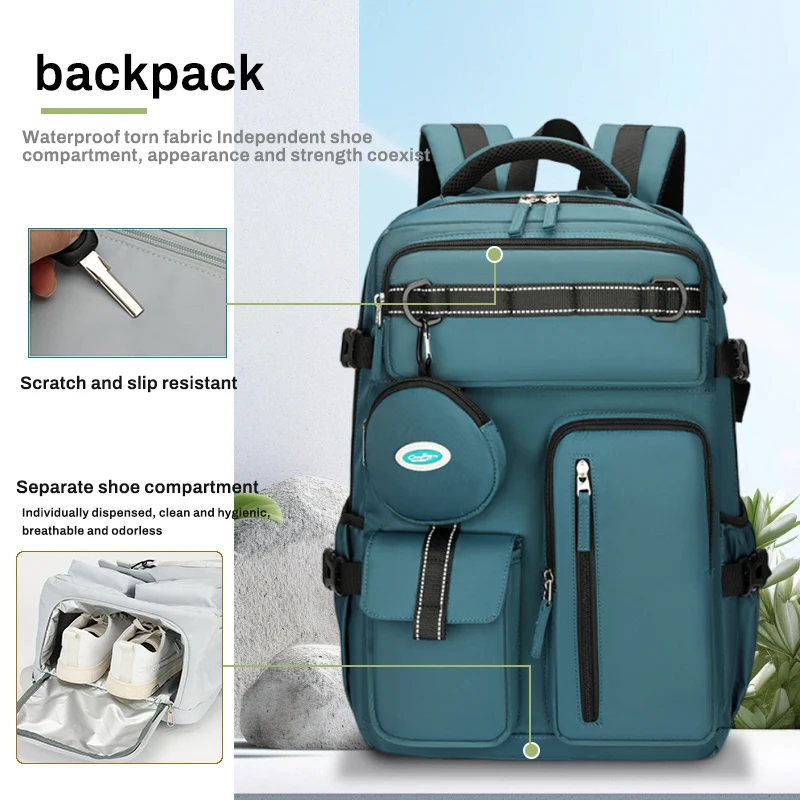
Are leather backpacks significantly heavier than synthetic alternatives?
Yes, genuine leather backpacks typically weigh 1-2 pounds more than their synthetic counterparts. Full-grain leather backpacks generally weigh 3-4 pounds when empty, compared to 1-2 pounds for similar nylon or polyester options. This weight difference is the trade-off for leather’s durability, aesthetic appeal, and aging characteristics. Many travelers find that proper strap design and weight distribution minimize the practical impact of this additional weight.
How can I verify if a leather backpack meets carry-on requirements?
Always check the exact dimensions provided by the manufacturer against your preferred airlines’ requirements. Remember that soft-sided backpacks offer some flexibility if slightly overpacked, unlike rigid luggage. If dimensions aren’t clearly stated, contact the manufacturer directly. For maximum versatility, look for backpacks with compression straps that can reduce the depth dimension when not fully packed.
Can leather backpacks really be made waterproof?
While leather is naturally somewhat water-resistant, no leather product is completely waterproof without additional treatment. Quality leather backpacks can achieve high water resistance through specialized treatments and construction techniques:
– Waterproofing waxes and sprays create an effective moisture barrier
– Sealed seams prevent water infiltration at stitching points
– Water-resistant linings provide secondary protection
– Covered zippers or flap designs shield vulnerable entry points
For moderate rain exposure, a well-treated leather backpack provides adequate protection, though extended downpours still warrant caution.
What’s the realistic lifespan of a quality leather backpack?
With proper care, premium full-grain leather backpacks can easily last 10-20 years of regular use. Many high-quality leather goods become family heirlooms, functioning well for decades. The determining factors include:
– Leather quality (full-grain lasting significantly longer than bonded)
– Construction techniques (stitching quality, hardware attachments)
– Usage patterns (frequency, exposure to harsh conditions)
– Maintenance routine (cleaning, conditioning, storage)
This longevity often justifies the higher initial investment compared to synthetic alternatives that typically need replacement every 2-5 years.
Do leather backpacks require special handling during airport security?
Most leather backpacks go through standard security procedures without issues. However, some considerations can streamline the process:
– Choose designs with easily accessible laptop compartments for quick removal
– If your backpack has numerous metal hardware pieces, be prepared for possible additional screening
– In rare cases, very thick leather might appear dense on X-ray machines, potentially prompting manual inspection
These minor considerations are rarely problematic and are outweighed by the benefits of traveling with a premium leather backpack.
Is a Leather Backpack Right for Your Travel Style?
The decision to invest in a leather carry-on backpack ultimately depends on aligning the product with your specific travel patterns and priorities. By evaluating your typical journeys, you can determine whether leather’s benefits justify its premium price point for your situation.
Ideal Travel Scenarios for Leather Backpacks
Business Travel
Leather backpacks excel when your trips involve:
– Client meetings or professional settings
– Transitions between formal and casual environments
– Need to project competence and attention to detail
– Regular but not extreme use patterns
Leather work backpacks particularly shine in these scenarios, offering professional aesthetics with practical organization.
Urban Exploration
City-focused travelers benefit from leather’s:
– Sophisticated appearance that fits diverse urban environments
– Durability when navigating public transportation and crowded spaces
– Security features that protect valuables in tourist areas
– Versatility from daytime sightseeing to evening dining
Digital Nomad Lifestyle
Those working remotely while traveling appreciate:
– Professional appearance for occasional meetings and coworking spaces
– Organization systems that accommodate technology and cables
– Durability for constant use across changing environments
– Aesthetic quality that enhances the travel experience
When Alternative Materials Might Be Better
Despite leather’s advantages, certain travel styles might be better served by synthetic materials:
Adventure Travel
If your trips primarily involve:
– Extensive outdoor exposure to extreme elements
– High-activity pursuits requiring technical performance
– Frequent exposure to moisture or abrasive conditions
– Need for minimum possible weight
Ultra-Budget Travel
When financial considerations are paramount:
– Initial investment in quality leather may be prohibitive
– Risk of theft or loss may be higher in certain destinations
– Frequent replacement due to changing needs or preferences
Sustainability Priorities
If environmental or ethical concerns are primary:
– Some travelers prefer avoiding animal products entirely
– Modern synthetic alternatives offer improving environmental profiles
– Recycled materials provide another conscientious option
The Decision Framework
When deciding if a leather backpack suits your travel style, ask yourself:
- Do you value long-term investment over minimal initial cost?
- Is professional appearance important in your typical travel scenarios?
- Do you appreciate products that develop character and uniqueness over time?
- Are you willing to perform basic maintenance to protect your investment?
- Does the weight difference between leather and synthetics significantly impact your comfort?
If you answered “yes” to most of these questions, a leather backpack likely aligns well with your travel priorities and will serve as a worthwhile investment in your travel experience.
Conclusion: Investing in Your Travel Companion
A premium leather carry-on backpack represents more than just a luggage choice—it’s an investment in how you experience travel itself. Throughout this guide, we’ve explored the multifaceted benefits these sophisticated companions offer the discerning traveler.
The unique appeal of leather backpacks stems from their remarkable duality: they satisfy practical travel requirements while simultaneously elevating your professional appearance and personal style. This balance is increasingly valuable in a world where the lines between business and leisure travel continue to blur.
The initial premium over synthetic alternatives is justified through several tangible benefits:
- Exceptional durability that translates to lower cost-per-use over time
- Aesthetic improvement rather than degradation with age
- Versatility across diverse travel environments
- Professional appearance that enhances credibility in business settings
- The unique satisfaction of owning an item that tells your travel story
As you consider your options, remember that the right backpack becomes more than a possession—it becomes a trusted travel partner. The best choice isn’t necessarily the most expensive or feature-laden option, but rather the one that most closely aligns with your specific travel patterns and priorities.
Whether navigating airport terminals, attending business meetings, or exploring new cities, a thoughtfully selected leather backpack serves as both a practical tool and a statement of personal style. It carries your essentials while simultaneously carrying something less tangible but equally important—an appreciation for craftsmanship, quality, and the meaningful experiences that define memorable travel.
